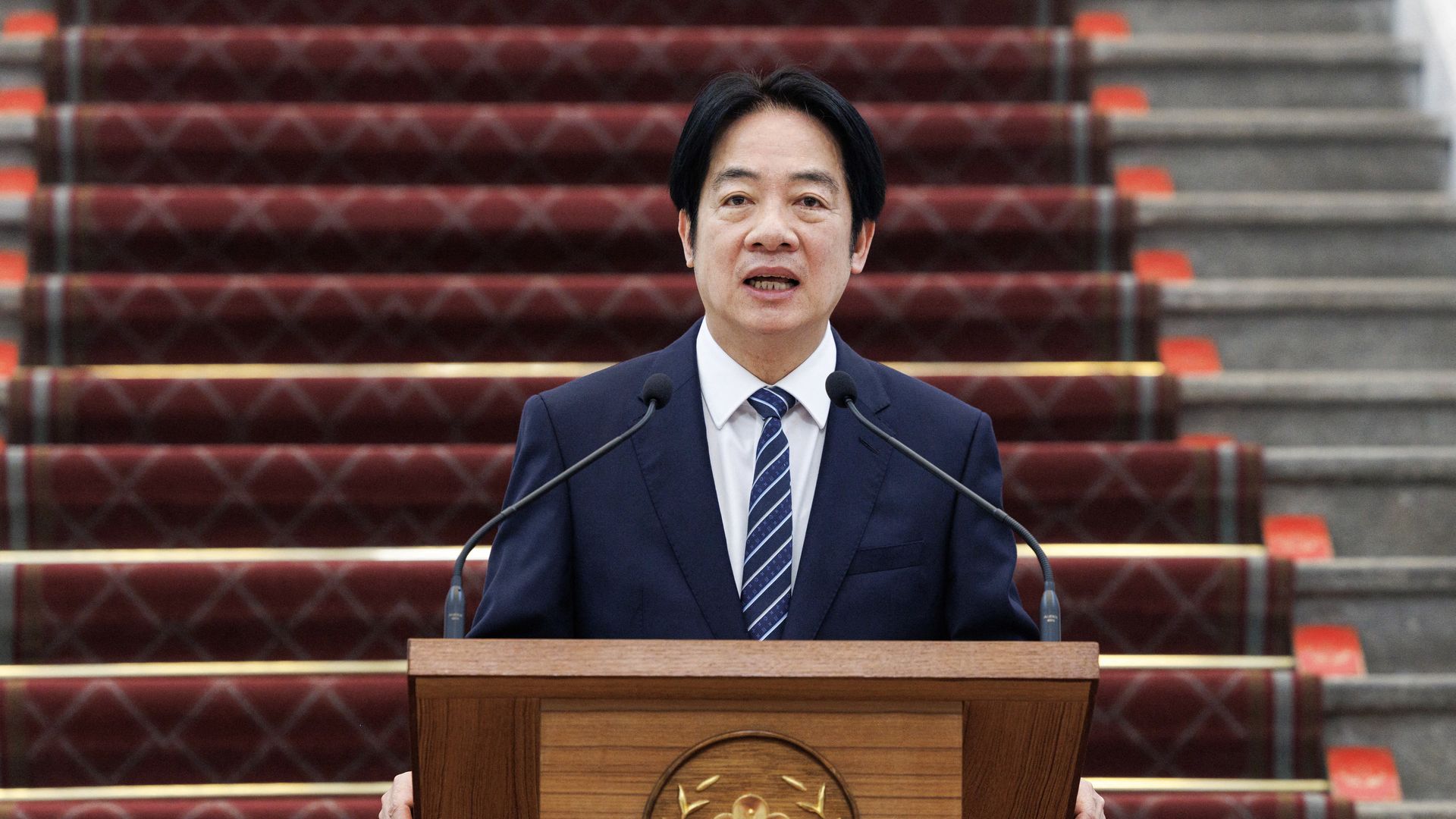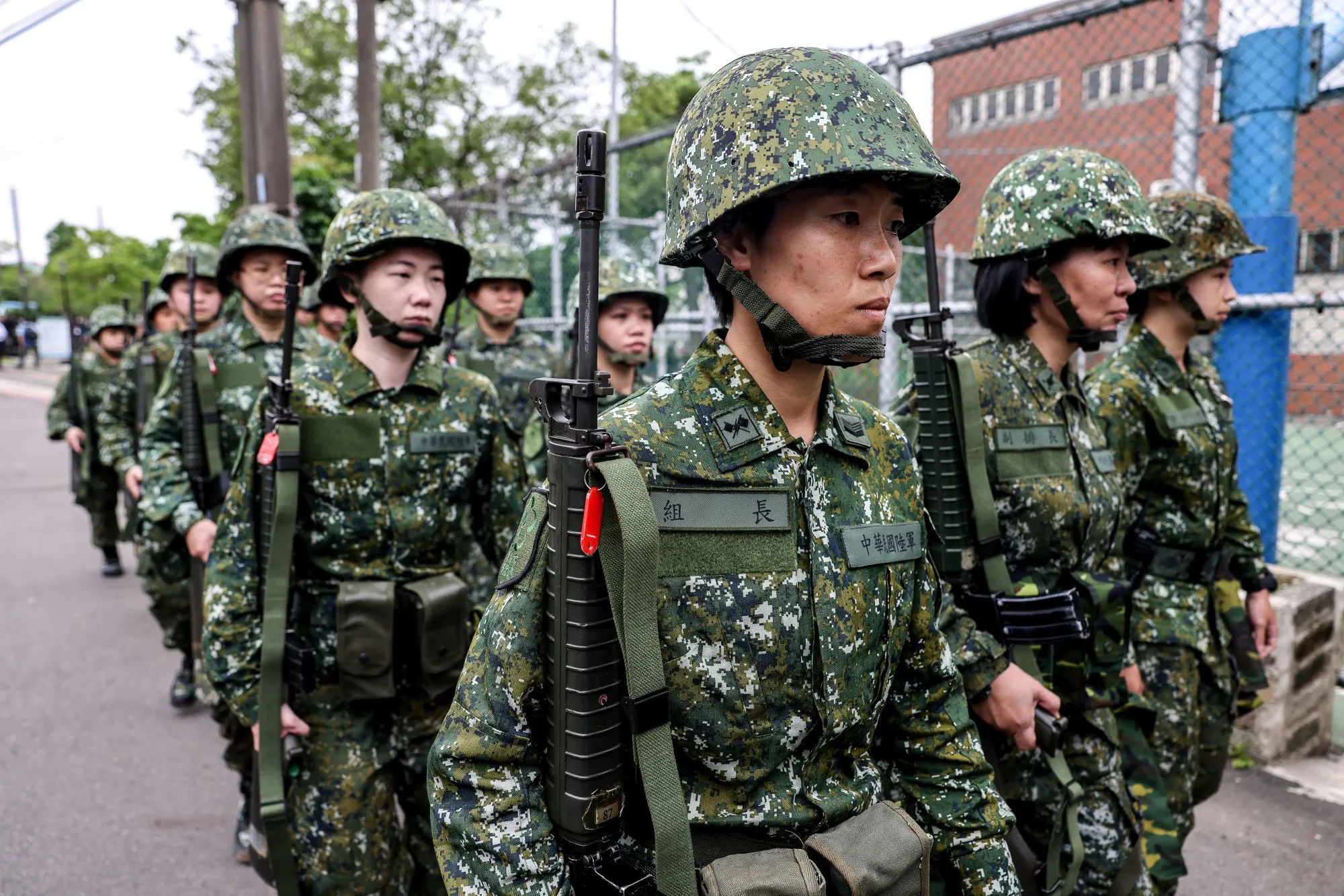Why Taiwan Must Ramp Up Defense Spending to Reach 5% of GDP by 2030 Under President Lai
- Research suggests Taiwan's defense spending increase is driven by escalating Chinese military pressures, with experts noting gray-zone tactics and invasion risks as key factors.
- Evidence leans toward U.S. influence playing a role, as Washington urges allies to bolster budgets, though Taiwan's unique fiscal challenges add complexity.
- It seems likely that aligning with NATO-like standards could enhance deterrence, but domestic opposition highlights debates over feasibility and priorities.
- The plan acknowledges geopolitical tensions in the Indo-Pacific, emphasizing modernization while balancing economic impacts.
- While controversial, the goal reflects a commitment to peace through strength, with potential benefits for regional stability amid differing stakeholder views.
Understanding the Announcement
In August 2025, President William Lai Ching-te set an ambitious target for Taiwan's defense spending to reach 5% of GDP by 2030, building on a proposed 3.32% for 2026. This move comes as China intensifies its military activities around the island, prompting Taipei to prioritize self-defense. For everyday readers, this means Taiwan is investing more in its military to deter potential aggression, much like how countries prepare for uncertain times.
Key Reasons for the Increase
Rising threats from China, including frequent incursions and gray-zone warfare, are primary drivers. U.S. pressure also factors in, with calls for higher spending to ensure Taiwan contributes to its own security. The plan aims to modernize forces with unmanned systems and better pay for personnel, fostering deterrence in the region.
Potential Challenges
Domestic politics pose hurdles, as opposition parties like the KMT scrutinize budgets and have proposed cuts. Economic strains from such hikes could require more debt, sparking debates on sustainability.
Historical Context
Taiwan's spending has hovered around 2-3% of GDP historically, last exceeding 3% in 2009. This gradual rise reflects evolving threats.
| Year | Defense Spending (% of GDP) |
|---|---|
| 2009 | Over 3% |
| 2024 | ~2.5% |
| 2025 | ~2.38% |
| 2026 (Proposed) | 3.32% (new method) |
Hey there, if you're wondering why Taiwan is gearing up to spend more on its military—aiming to hit that 5% of GDP mark by 2030 under President William Lai—it's a story packed with geopolitics, history, and some practical tips for understanding global tensions. Picture this: a small island democracy facing off against a massive neighbor that's flexing its muscles more each day. That's Taiwan and China in a nutshell. Lai's announcement in August 2025 wasn't just talk; it's a strategic pivot to beef up defenses amid rising threats. Let's break it down step by step, in simple terms, like we're chatting over coffee.
The Big Picture: What's Driving This Defense Push?
Taiwan's been under pressure from China for years, with Beijing claiming the island as its own and ramping up military drills, incursions into Taiwanese airspace, and even "gray-zone" tactics—like sending fishing boats or balloons to test boundaries without full-on war. President Lai, speaking aboard a navy frigate in Su'ao, Yilan County, made it clear: China's threats have spiked, and Taiwan needs to show it's serious about protecting itself. By targeting 5% of GDP by 2030, Lai's signaling to the world—and especially to allies like the U.S.—that Taiwan won't be a pushover.
But why now? Well, the U.S. has been nudging Taiwan (and others) to spend more on defense. Think of it as Washington saying, "Hey, we're here to help, but you've got to pull your weight too." During the Trump administration, there were even calls for 10% of GDP, though experts say that's a stretch. Lai's plan also nods to NATO standards, where members recently committed to bumping up to 5% by 2035—splitting it into "hard" spending on weapons and troops (3.5%) and "soft" on things like infrastructure (1.5%). For Taiwan, this could mean including coast guard costs and veteran benefits in the tally, which bumps the numbers without always adding new firepower.Real-world example: In 2025, Taiwan's defense budget hit a record but still only about 2.38% of GDP. Jumping to 3.32% for 2026 (NT$949.5 billion or roughly US$31 billion) includes new accounting tricks, like folding in coast guard expenses—vital since they're on the front lines against Chinese incursions. Without that, it's closer to 2.84%. By 2030, at 5%, we're talking a massive NT$1.5 trillion annually, based on current GDP projections. That's like doubling the military wallet in five years!Breaking Down the Threats: China's Role in All This
China's military buildup is no secret. Their defense budget? A whopping US$248 billion in 2025, dwarfing Taiwan's. They've got advanced jets, missiles, and a navy that's expanding fast. Taiwan's response? Focus on "asymmetric warfare"—think cheap drones and missiles over pricey tanks—to make any invasion too costly for Beijing. Lai's emphasized unmanned systems, next-gen frigates, and homemade submarines. Plus, extending conscription from four months to a year and hiking soldier pay to attract talent.
Stats to chew on: China's gray-zone activities have surged—over 1,700 aircraft incursions in 2024 alone. Taiwan's Han Kuang exercises, now longer and more realistic, simulate these scenarios, including urban warfare and disinformation. It's not just about hardware; it's building resilience.| Category | 2026 Allocation (NT$ Billion) | Purpose |
|---|---|---|
| Personnel | 200.8 | Pay raises, training |
| Operations | 199 | Ammo, spare parts |
| Investments | 161.6 | U.S. arms, drones |
| Additional Arms | 110 | Unspecified procurements |
| Total (incl. Coast Guard/Veterans) | 949.5 | Full defense umbrella |
U.S. Pressure and International Ties
The U.S. is Taiwan's top arms supplier, providing everything from fighter jets to missiles. But there's a catch: Washington wants more skin in the game. Elbridge Colby, a key U.S. defense figure, suggested 10% during hearings. Lai's 5% goal is a compromise, showing commitment while pushing for joint R&D with allies. Internal links: Check our posts on U.S.-Taiwan Arms Deals or Indo-Pacific Security. For more, see the Heritage Foundation's take on Taiwan's steps.
Tips to Reduce Costs and Maximize Impact
Boosting to 5% isn't cheap, but smart strategies can help:
- Prioritize Asymmetric Tools: Invest in drones and anti-ship missiles over big-ticket items—cheaper and effective against larger foes.
- Collaborate Internationally: Joint production with the U.S. or Japan cuts costs and builds alliances.
- Civil Defense Focus: Train civilians through exercises like Urban Resilience—low-cost, high-impact for total defense.
- Budget Scrutiny: Avoid "structural imbalances" by balancing procurement with maintenance.
- Economic Offsets: Use defense spending to boost local industry, creating jobs in tech and manufacturing.
Example: Taiwan's indigenous submarine program not only saves on imports but spurs innovation.
Counterarguments: Is This Too Much, Too Fast?
Not everyone's on board. Opposition like the KMT argues for up to 3.5% but warns against "indiscriminate" spending. Critics say doubling the budget risks economic strain—Taiwan might need more debt, hitting growth. Parliament has frozen funds before, like 14% in 2025. Some experts call 5-10% oversimplistic, ignoring Taiwan's fiscal realities. Plus, with KMT controlling the legislature, Lai faces an uphill battle—recalls and cuts could derail plans.
Historical spending table for perspective:
| Year Range | Average % of GDP | Notes |
|---|---|---|
| 1976-2024 | ~2-3% | Peaked over 3% in 2009 |
| 1988-2019 | 2.0-2.3% | Steady but below targets |
| 2023 | 2.6% | Record nominal but low % |
From SIPRI data.
Comparisons: Taiwan's 2.6% outpaces some NATO allies like Germany, but lags Israel's 5% or Ukraine's wartime levels.
FAQs: Your Questions Answered
Q: What does 'reach 5% of GDP by 2030' really mean? A: It means allocating about 5% of Taiwan's total economic output to defense—roughly US$50-60 billion annually by then, focusing on deterrence.
Q: Will this prevent a Chinese invasion? A: No guarantees, but it raises the cost for Beijing, buying time for diplomacy. Experts say preparation avoids war.Q: How does this affect everyday Taiwanese? A: Higher taxes or debt possible, but it could create jobs in defense tech. Conscription changes mean more youth involvement.
Q: What's the opposition's view? A: KMT supports increases but wants focus on priorities, not blanket hikes.
Q: Links for more? A: Internal: Taiwan's Military Modernization. External: Reuters on Lai's speech or Focus Taiwan's coverage.In wrapping up, Taiwan's push to reach 5% of GDP in defense spending by 2030 under President Lai is a bold step toward security in a tense region. It's about deterrence, alliances, and resilience—not provocation. If you're interested in global affairs, dive deeper into sources like the Council on Foreign Relations or follow updates on X. What do you think—smart move or too risky? Share your thoughts!
Key Citations:
- Taiwan president ups defence spending target to 5% of GDP | Reuters
- Defense spending to reach 5% of GDP by 2030: President
- Taiwan's Defense Spending Rise Is a Step in the Right Direction
- Taiwan's Lai sets defence spending target at 5% of GDP - The Hindu
- Lai aims for 5% GDP defense spending - Taipei Times
- Taiwan’s NATO Defense Spending Commitment - Domino Theory
- Taiwan’s Government Eyes Expanded Defense Budget at 3.3% of GDP
- Taiwan's Lai Says Defense Spending to Reach 5% of GDP by 2030 - Bloomberg
- Taiwan's president pushes to increase defense budget amid rising threat from China : NPR
- Taiwan President Ups Defence Spending Target to 5% of GDP
- Taiwan Announced a Record Defense Budget: But Is It Enough to ...
- The Risks of Oversimplifying Taiwan's Defense Needs - The Diplomat
- Defense spending to reach unprecedented 3.3% of GDP
- Military expenditure by country as percentage of gross domestic ...




No comments:
Post a Comment